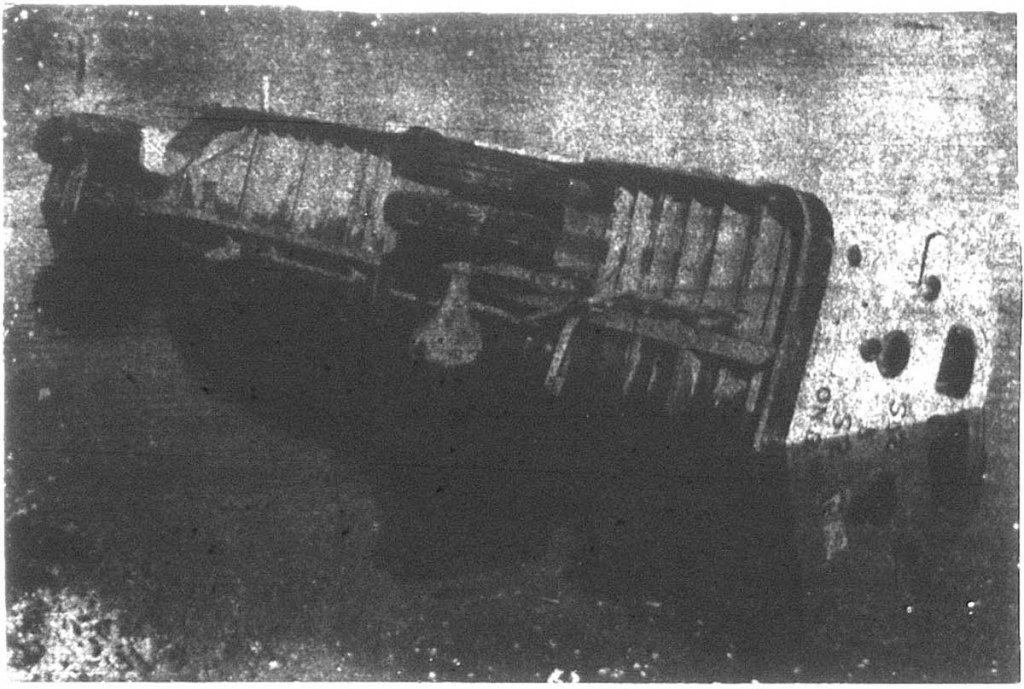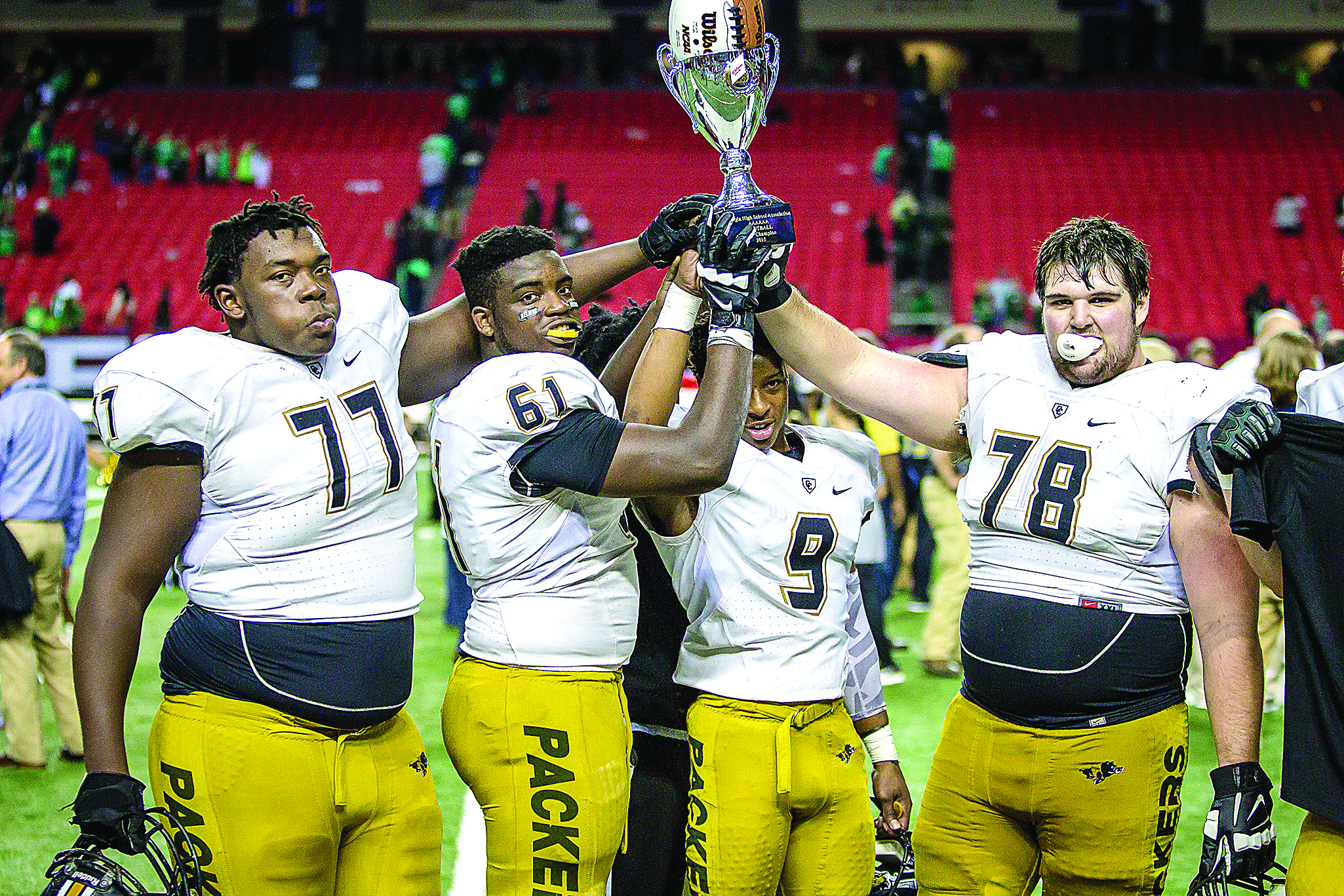March 3, 1959: ‘We just started pulling people out’
Published 8:00 am Wednesday, March 6, 2019

- The Tift County school bus in the pond on Ike Jackson’s property on the morning of March 3, 1959. The original photo has been lost and this is pulled from a microfilm copy of the March 4 Tifton Gazette.
TIFTON, Ga. — March 3, 1959, started as a normal morning on Doyer Jones’ school bus.
“I think I was sitting on the left side of the bus,” said passenger James Alfred Denson. “You know, casual talking, with my hand on the back of the seat.”
Jones’ bus had a 56.5-mile route every morning that covered the Brookfield area of Tift County. That morning, however, ended in tragedy.
As Jones drove on then-unpaved Lower Brookfield Road, the bus hit a bump, then a second one. Despite traveling at a speed later estimated at 30 miles per hour by the Georgia State Patrol and being a veteran driver, Jones was not able to correct the bus, which fell into a pond on Ike Jackson’s property. Nine died in the accident and many more were injured.
Immediately after the accident, Jones told an Atlanta Journal source the wheels came up on the unlevel ground.
“All of a sudden, all I knew the bus was in the pond. Like, slid in down at an angle and fell on the right side,” said Denson.
“He hit that hole,” said passenger Oscar Holt. Because Holt was standing up inside the bus, he realized what was happening.
“So I reached up to open one window and I got the window halfway open,” Holt said.
“The bus didn’t turn over in the pond,” said Holt. “It laid over in the pond because the shoulder was soft and it just laid over like a horse.”
Holt said Jones panicked. When talking to The Macon Telegraph, Ike Jackson, owner of the pond, said he observed the same.
‘County’s Worst Tragedy,’ 60 years later
Fortunately, the bus was not alone on the road. Carl Lowry and Charles Ahrens were in a car behind the vehicle. Jack Withers saw the accident as he drove by. Ambulances and authorities were telephoned. The men were joined by Eli Joyner on the scene.
Jones had kicked out the windshield and was pulling out students. Holt said he was pulled out by two of the men through the open window. Holt, Denson and other students, James Collins and Major Wright, switched from being accident victims to rescuers.
Holt said he started kicking out windows.
“We just started pulling people out,” he said.
Passenger Joan Howard said she initially was not scared, but when the students felt the water, they panicked.
“I remember screams,” she said. “People screaming ‘Help me! Help me! Help me!’ It was a frightening experience.”
“I was screaming, too,” said Louise Moore, also a student on the bus. “I couldn’t swim.”
“People were pulling me down. I remember that,” said Moore. “I was going under the water and I know I came up a couple of times. The third time I was going down, I remember my brother, Alfred, Al, he caught me by the top of my hair, the top of my head and pulled me up.”
“By the grace of God,” said Moore. “I believe that was the only way I was saved.”
Before getting out, Denson said he was still gripping a seat, but had others grabbing him, trying to pull themselves up.
“Luckily, I was able to get the window down and get out and start to pull some of the other kids that were there out.”
Howard believes that panic led to many children being trampled. The bus contained an emergency exit, but it was reported the handle broke off, presumably by scared riders.
In addition to ambulances, doctors Charles Zimmerman, E.W. Flowers and Carl Pittman, and nurses arrived to provide assistance. Zimmerman told The Atlanta Constitution he began teaching artificial respiration to non-medical personnel on the scene.
The death toll was nearly three higher.
Thomas Maulsby, Robert Knight and Gloria Knight were revived at the scene.
Robert Knight said he recalls little about that day.
“I don’t remember very much,” he said. “I was just in first grade and remember getting on the bus.”
Twelve children were pulled out of the bus unconscious. Five were immediately pronounced dead. Rescuers and the doctors on scene worked for as long as 90 minutes to revive others. Three children responded. Gloria Jean Davis, Rufus Harold Green, Bernice Henderson, Henry Edward Johnson, Bobby King, Artie Lee Simmons, brothers Billy Tabor and Leroy Tabor Jr., and Earlene Wilcox did not survive.
Knight said, “They had placed me over there with the dead.” He does not remember anything from the next few days.
“The next thing,” he said, “I woke up several days later and I had seen all these lights over my head.” Everything else Knight knows about the accident, he was told.
“All I seen were these bright lights and I realized I was in the hospital.” He was down the hall from his older sister, Gloria. “Finally, when I got my energy back,” he said, “I went down to her room.”
“She was telling me what had happened. I didn’t know. She was telling me about who had died and all that kind of stuff and it was a shock to me.”
Knight said he stayed in the hospital for about three weeks.
While nine were known to be dead in the accident and three others hospitalized in serious condition, no one had an accurate count of how many students were on board (estimated by various individuals as between 60-100 children). Some parents, including Howard’s, took their children home from the scene. During the confusion, there were fears the death toll might be higher.
“Observers feared a number of children were trapped in the overturned bus, but when the bus was uprighted by two wreckers, no children were found,” The Gazette stated in an article the next day. The pond was also dragged.
By the end of the morning, it was estimated that 1,000 people were in the area. Some were rescue personnel, which also included local Red Cross chairman Ray Massey. Others were law enforcement from Tifton, Tift County and Berrien County. Many more in attendance stopped to simply get a glimpse of the tragedy.
After being taken from the scene by her father, Howard said she eventually went to the hospital to be checked out. Approximately 40 children on the bus were treated at Tifton’s hospital, then located at the intersection of 12th Street and North Tift Avenue.
Denson said he had an injured finger, but did not get further treatment at the hospital. Holt went back to the fields that day. “I went to work that afternoon because my daddy was a farmer,” he said. “After that was all over with, I went to work.”
Following the accident, Tift County’s next few days were dedicated to funerals for the victims and investigations. Word of the crash soon spread.
This is the second part in a multi-part series looking at the 1959 bus accident that affected so many. The first part ran in the Sunday, March 3, edition of The Tifton Gazette. The next part will be published later this week.





